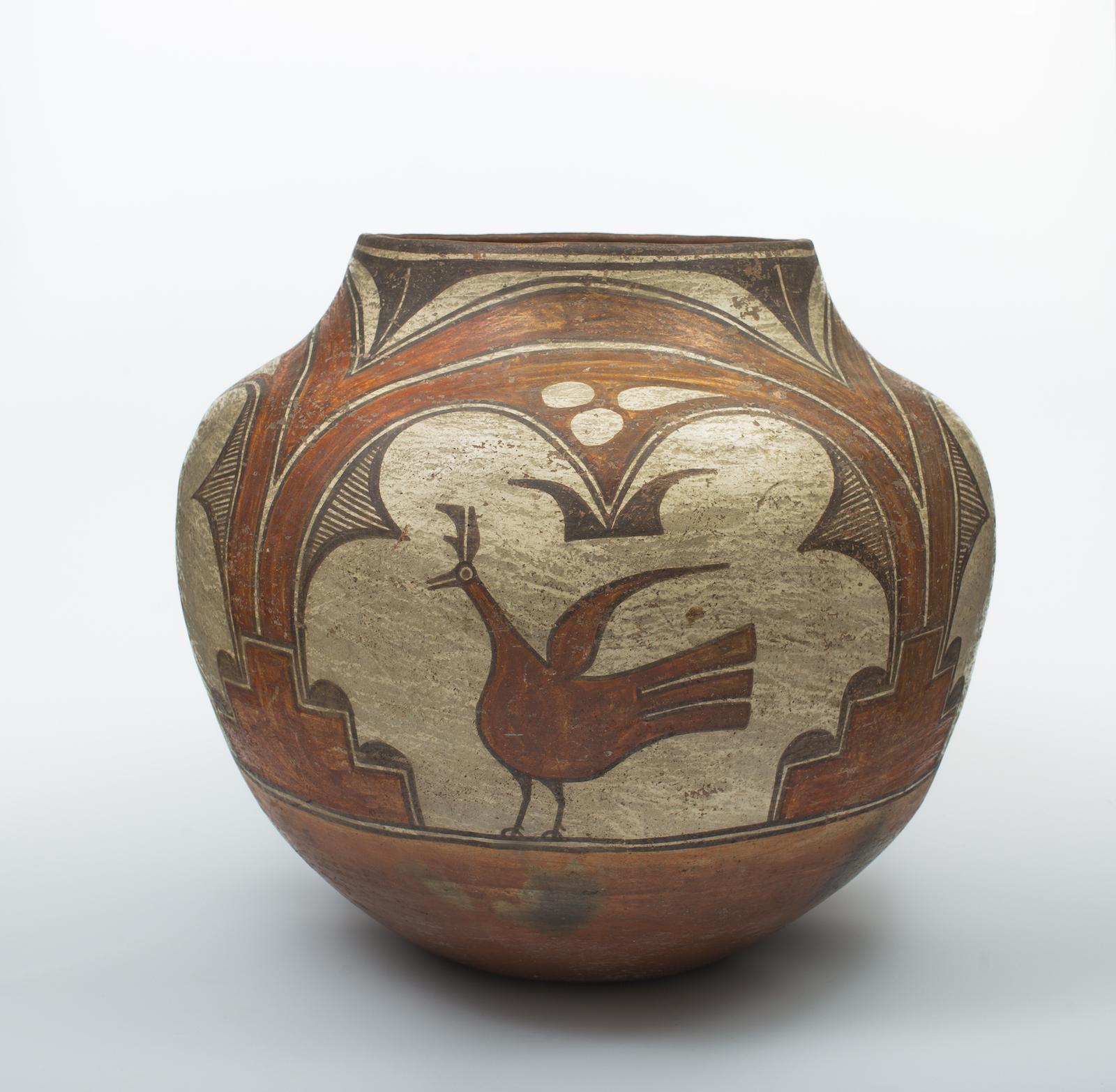
Zia Pueblo Jar. 15 1/4 x 17 (diameter) in. Collection of the Museum of Native American History.
MADISON, Wis. — This fall the Chazen Museum of Art at the University of Wisconsin-Madison presents Companion Species, an insightful and timely exhibition that places works of art from Native and non-Native artists in conversation with each other. Its centerpiece is Marie Watt’s vibrant textile Companion Species (Speech Bubble) of 2019, in which community members stitched words such as “mother,” “we” and “ancestor” onto pieces of reclaimed red wool blankets. Through an innovative and frequently playful installation of works from 200 B.C.E. to the present day, the exhibition considers the importance of community, reciprocity, and fellowship with animals and nature. It will be on view at the Chazen from Oct. 18, 2021 through Dec. 30, 2021.
"Companion Species asks us to reexamine our connectedness to our neighbors and to our environment through a diverse range of objects, traditions, and approaches,” said Chazen Museum Director Amy Gilman. “As we continue to navigate unprecedented social, political, and public health challenges, it is projects like this that allow us to find meaning and build resilience, together.”
The exhibition is organized into three thematic sections: Storytelling, Relationships, and Community. The first section, Storytelling, relates how visual narratives can convey moral or personal lessons or cultivate collective memory. These artists understand that their audiences may more easily access stories when animals and nature represent abstract concepts.
The second section, Relationships, explores how Native and non-Native artists across time have depicted animals, used animal materials, and reinforced the value of relationships between various species, in their artworks. Often in these works the boundaries between species are blurred, with humans looking to animals to model understanding and acceptance.
The artists represented in the third section, Community, expand its definition to include animals, plants, and the land. By depicting and embracing collective activities, such as sewing circles, dancing or hunting, these practitioners reinforce that we are all connected, with new communities born when cross-cultural understanding is fostered.
Among the artists included in the exhibition are Norman Akers, Rick Bartow, Louise Bourgeois, Julie Buffalohead, Charles Burchfield, Beth Cavener, Tony Da, Lesley Dill, Jim Dine, Lela Naranjo Gutierrez and Luther Gutierrez, Laurel Roth Hope, Gina Litherland, Merina Lujan, Quincy Tahoma, Rufino Tamayo, and Eah Ha Wa.
Companion Species and its national tour is organized by Crystal Bridges Museum of American Art, Bentonville, Arkansas, and Art Bridges Foundation, in collaboration with the Museum of Native American History.
Support for the national tour of Companion Species is provided by Art Bridges.
The Chazen Museum of Art makes its home between two lakes on the beautiful campus of the University of Wisconsin–Madison. Within walking distance of the state capitol, it sits squarely in the heart of a vibrant college town. The Chazen’s expansive two-building site holds the second-largest collection of art in Wisconsin, and at 166,000 square feet, is the largest collecting museum in the Big 10. The collection of approximately 23,000 works of art covers diverse historical periods, cultures and geographic locations, from ancient Greece, Western Europe and the Soviet Empire to Moghul India, 18th-century Japan and modern Africa.



























